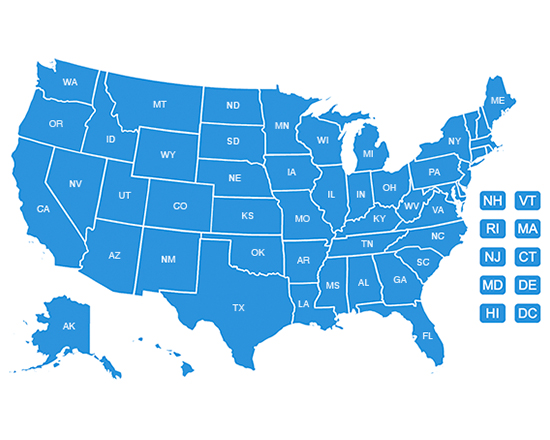The Nursing Home Law Center is committed to providing the legal resources necessary to hold negligent facilities accountable.
Sepsis in Nursing Home
Sepsis is an extreme and potentially fatal physiological response to infection, requiring immediate diagnosis and medical treatment. It is more dangerous for older adults in nursing facilities who are less capable of fighting infections and for people with pre-existing health conditions that increase the risk of sepsis.
Nursing home employees are responsible for diagnosing and treating sepsis and resolving infections before they lead to sepsis. If a nursing home resident develops sepsis, it could indicate nursing home negligence.
Did your loved one suffer sepsis or septic shock in their nursing home? If so, the personal injury lawyers at Nursing Home Law Center, LLC can help you determine if abuse has occurred and take legal action against responsible parties, if necessary.
Contact our bedsore lawyers at (800) 926-7565 for a free consultation.

What is Sepsis?
Sepsis, also known as blood poisoning, is a potentially life-threatening condition caused by the body’s overreaction to an infection. When germs enter your body, the immune system produces inflammatory cells to kill the foreign invaders and heal damaged cells.
Sometimes, however, the body’s inflammatory response can be so extensive that it harms the body instead of healing it, resulting in sepsis.
Inflammation and blood clotting can lead to reduced blood flow to vital organs and extremities, increasing the risk of tissue damage, organ failure, and death. The condition is called “severe sepsis” when it causes the organs to malfunction due to low blood pressure.
Without prompt treatment, sepsis can lead to septic shock, when a patient’s blood pressure drops to dangerously low levels.
Like heart attacks and strokes, sepsis and septic shock are medical emergencies that require immediate treatment to prevent severe health consequences and death.

Who is Most at Risk of Developing Sepsis?
Sepsis and septic shock can happen to anyone, but the ones most at risk include:
- People aged 65 and above
- People with comorbidities, e.g., diabetes, kidney disease, lung cancer
- People with weakened immune systems
- People with severe injuries, such as extensive burns or open wounds
- Patients with catheters managing blood flow and breathing tubes
- Patients in the intensive care unit (ICU)
- People with histories of antibiotic or corticosteroid use
- People prone to pressure ulcers
What Infections Can Cause Sepsis?
Bacterial, viral, parasitic, and fungal infections can cause sepsis. However, bacterial infections are the most common cause of sepsis, especially in nursing homes.
Sepsis can develop from an infection of any of the following organs:
- Appendix
- Abdominal cavity
- Gallbladder
- Liver
- Brain or spinal cord
- Skin
- Urinary tract
The germs that most frequently cause sepsis are:
- E. coli
- Staphylococcus
- Streptococcus
Bedsores are a common cause of sepsis in nursing homes. These are skin injuries caused by excessive pressure on the body, usually stemming from staying in one position for too long. When left untreated, bedsores can become infected and lead to sepsis.
Bedridden patients and those who use wheelchairs are most susceptible to bedsores, as they usually cannot reposition themselves without assistance.

What Are the Warning Signs of Sepsis and Septic Shock?
To prevent sepsis in nursing homes, staff members must be on the constant lookout for the warning signs in the vulnerable population, including:
- Confusion or disorientation
- High heart rate or weakened pulse
- Shortness of breath or rapid breathing
- Extreme pain
- Clammy skin
- Fever, shivering, or very low body temperature
When a patient exhibits these signs and symptoms, nursing homes must provide immediate treatment to prevent the patient’s blood pressure from dropping too low and causing severe sepsis. Failure to do so can lead to septic shock, which may come with the following signs:
- Requiring medication to maintain systolic blood pressure (the second number in a blood pressure reading) higher than or equal to 65 mm Hg
- Elevated lactic acid levels in the blood (an indicator that the body is not using oxygen properly); a lactic acid reading of 2 mmol/L is associated with a mortality rate of 28.4%
Some nursing home residents with mild to severe sepsis can develop sepsis rash, which appears as tiny red spots on the skin. This condition occurs when sepsis interrupts the blood flow to major organs, causing the blood vessels to explode and blood to clot underneath the skin.

How Can Nursing Home Abuse Lead to Sepsis?
Sepsis and septic shock can occur suddenly and develop rapidly. However, infections tend to be more gradual. Medical professionals should be able to recognize the signs of infection, diagnose it, and provide proper treatment before sepsis occurs.
Unfortunately, nursing home neglect is a common problem across the country’s long-term care facilities. The following are common forms of negligence that lead to sepsis in nursing homes:
- Lack of Supervision: Inadequate supervision can lead to multiple problems, including accidental injuries (which can lead to infection-prone wounds) and infrequent repositioning (for disabled and bedridden residents). The lack of attention can also lead to delayed treatment for residents already exhibiting sepsis symptoms.
- Poor Wound Care: Sepsis can occur when bacteria enter open wounds and cause an infection. Poor wound cleaning, dressing, and treatment can increase the risk of this condition.
- Misdiagnosis: When a healthcare professional delays diagnosis or fails to diagnose a patient correctly, it could lead to more severe health consequences. For instance, a doctor could say that the patient’s illness is “just a cold” when it is actually a respiratory infection. Mistaking a severe disease for something mild can also lead to sepsis.
- Poor Hygiene, Sanitation, and Disease Control: Sepsis is not contagious, but many infections are. Hence, preventing sepsis also requires effective infection prevention protocols, including proper handwashing, personal protective equipment (PPE) use, and sanitation. Without adequate measures, healthcare staff members can pass infections from patient to patient, leading to a chain reaction or outbreak.
Nursing home neglect, intentional or unintentional, can cause severe sepsis and even lead to deaths. Preventing sepsis and its consequences, including sepsis rash and septic shock, is a nursing home’s legal duty to all its residents.

How Common is Sepsis Among Nursing Home Residents?
According to the Centers for Disease Control and Prevention (CDC), approximately 1.7 million adults in the US develop sepsis yearly, and around 270,000 die from it.
Elderly patients in nursing homes are at a higher risk of developing sepsis and dying from it, according to an investigation by Kaiser Health News and the Chicago Tribune. These sources stated that nursing homes and assisted living facilities around the country have failed to prevent pressure ulcers and other infections that could lead to severe sepsis. Unfortunately, there are no reports to show how many of these infections become fatal.
However, Kaiser Health News cites that a federal report found sepsis to be the most common reason for hospital transfers among nursing home residents. These cases resulted in death “much more often” than other reasons for hospitalization.
An estimated 25,000 nursing home residents suffer from sepsis yearly, according to Definitive Healthcare (a private healthcare data firm).

Sepsis Survival Rate
According to a World Journal of Critical Care Medicine study, up to 60% of elderly patients die from sepsis. The sepsis survival rate decreases further with older age, as the body’s immune system grows weaker and weaker with aging.
A study published by the National Library of Medicine found that nursing home residents with severe sepsis had significantly more extended hospital stays and higher rates of ICU admission and in-hospital mortality (compared to non-nursing home patients).
Most patients can recover from mild sepsis, but approximately 40% of people with septic shock die. The risk of death is even higher without proper medical treatment.
What to Do if You Suspect Your Loved One is Suffering from Sepsis
Sadly, many nursing homes fail to prevent avoidable sepsis infections. Sepsis develops rapidly and can progress quickly without immediate medical attention. If you have a family member in a nursing home or assisted living facility, you must familiarize yourself with sepsis symptoms to take prompt action.
Notify nursing home staff members immediately if you see signs in your loved one or they report unusual symptoms. Staff must treat potential sepsis as a medical emergency and use critical care medicine as needed. If nursing home staff members do not act quickly, call 911 to take your loved one to the emergency room.

How to Take Legal Action for Sepsis in Nursing Homes
When nursing home residents develop sepsis, it could signify abuse, neglect, and negligence. If your loved one’s nursing home failed to prevent them from developing sepsis, you could take legal action on the following grounds:
- The defendant (nursing home) owed a duty of care to your loved one. Nursing homes are legally obligated to provide proper medical care and attention to all residents, including preventing infections and their consequences.
- The defendant breached this duty of care. Sepsis is usually a result of nursing home neglect, which is a breach of duty. Developing this condition is highly unlikely if a patient receives adequate care, supervision, and treatment from the nursing home staff.
- Your loved one suffered a significant injury. Under personal injury law, sepsis, sepsis rash, or septic shock is considered a substantial injury, aside from the emotional and financial consequences.
- The defendant’s negligence led to your family’s damages. You must show that the nursing home’s actions or failure to act caused your family’s losses, such as lost wages, medical bills, etc.
Liable Parties
Nursing home employees are trained to prevent life-threatening conditions like sepsis. Failure to do so may be considered abuse and punishable by law. Depending on your case’s circumstances, liable parties for sepsis in nursing homes may include:
- Doctors
- Nurses
- Nursing assistants
- Direct care employees
The nursing home owner or administrator may also be liable for failing to prevent nursing home sepsis, as is their legal obligation. If your loved one developed sepsis in the facility, the nursing home could be accountable for violating their “right to get proper medical care.”
Evidence of Sepsis in Nursing Homes
You will need substantial evidence to prove nursing home negligence in your loved one’s case. Your lawyer will help you collect viable forms of proof, such as:
- Medical records
- Photos of injuries that could lead to sepsis, e.g., bedsores
- Medical expert testimony
- Hospital charts and emergency room reports
- Witness accounts of neglect or abuse
- An autopsy report, in case of wrongful death
Recoverable Damages
When you file a nursing home sepsis lawsuit, you could recover financial compensation for the following losses:
- Medical Bills: Costs of emergency transportation, hospitalization, medication, surgery, etc.
- Disability: Related medical expenses and damages if your loved one sustains a disability from the long-term effects of severe sepsis or septic shock.
- Pain and Suffering: Compensation for physical and emotional harm, e.g., physical pain, emotional trauma, mental anguish, etc.
- Loss of Quality of Life: Compensation for quality or enjoyment of life lost following the condition.
- Lost Wages: Income, wages, benefits, and revenue lost by the victim or family members.
- Wrongful Death: Funeral and burial costs, pre-death medical expenses, loss of consortium, and other related damages if your loved one dies from sepsis.
Cases involving sepsis in nursing homes usually lead to significant settlements, primarily because of the high costs of treating sepsis. According to the Centers For Disease Control and Prevention, an average hospital stay for sepsis is twice as high as a stay for another condition.
Dealing With the Insurance Company
Sepsis in nursing homes is not uncommon, and many victims pursue compensation by filing legal claims. Filing a nursing home sepsis lawsuit against a facility could open a discussion with its insurance provider. Once you file a claim, you may receive an initial offer to settle your damages.
Unfortunately, insurers that cover nursing homes are usually powerful companies that want to compensate plaintiffs as little as possible. And because sepsis in nursing homes is so common, some insurance companies refuse to play fair.
If you receive an unfair offer for your claim, do not accept it. Instead, let your nursing home abuse lawyer negotiate on your behalf. Having a legal representative take over your claim will increase the chances of receiving a fair settlement.
Do You Need to File a Nursing Home Sepsis Lawsuit?
Cases of sepsis in nursing homes typically end in settlements, wherein insurance companies agree to pay specific amounts to claimants. However, litigation may be necessary in some cases, such as when:
- The nursing home denies responsibility for your loved one’s illness or continues to dispute your claim
- The nursing home’s insurance company refuses to make a fair offer or denies your claim without a valid reason
- Negotiations have stalled
Our attorneys are experienced in both out-of-court negotiations and litigation. We will ensure you receive the compensation you deserve regardless of what legal option is necessary.
The Statute of Limitations for Sepsis in Nursing Homes
Unlike accidental injuries in most personal injury cases, the statute of limitations may be longer for cases of sepsis in nursing homes. Often, infections and sepsis are caused by weeks, months, or even years of nursing home abuse and neglect. Depending on your state’s rules, the clock may start ticking on the ‘date of discovery’ instead of the date of the underlying incident.
In other words, you must file a claim or lawsuit as soon as you discover the abuse or neglect. In many cases, families file claims only after their loved ones have developed sepsis because they were unaware of the mistreatment until then.
How a Nursing Home Abuse Lawyer Can Help
Sepsis in nursing homes often indicates a facility’s failure to provide adequate supervision and medical care to residents. Unfortunately, this kind of negligence leads thousands to severe sepsis and deaths.
If your loved one has developed sepsis in a nursing home, an experienced attorney can help you recover financial compensation by:
- Investigating your case’s circumstances
- Identifying liable parties
- Calculating your family’s damages
- Collecting evidence to support your claim
- Filing a claim on your behalf
- Negotiating a fair settlement
- Filing a lawsuit and representing you in court, if necessary
We Help Victims Seek Justice for Suffering Avoidable Sepsis Infections
In nursing homes, sepsis develops when staff fails to address risk factors, recognize sepsis symptoms, diagnose the condition early, and provide immediate treatment. As a result, countless patients have an increased risk of blood clots, organ failure, severe sepsis, and septic shock–all potentially fatal conditions.
If your loved one developed sepsis in a nursing facility, the attorneys at Nursing Home Law Center, LLC can help you seek justice.
We help victims obtain maximum compensation through out-of-court settlements, trials, wrongful death lawsuits, and other means necessary.
Contact our law office at (800) 926-7565 or use the contact form for a free consultation. All confidential or sensitive information you share with our legal team remains private under an attorney-client relationship.
Our lawyers handle all accepted cases of sepsis in nursing homes on a contingency fee basis. This agreement ensures you don’t have to pay legal fees unless we win your case.


